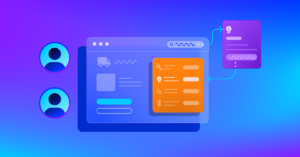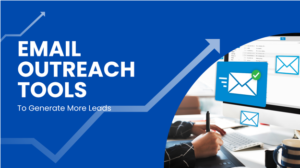
As the martech space matures, so have app exchanges that offer easier access for marketers to load up their stacks.
Today, Salesforce unveiled a new homepage for their AppExchange that helps marketers better navigate the marketplace of over 7,000 prebuilt partner apps. And this serves no small portion of Salesforce’s client base. They report that 91% of their total business customers use AppExchange apps, and that the exchange has surpassed 10 million downloads.
Teams have become more remote over the last two years, and business processes in many companies have transformed as a result. Even as some professionals reunite at the office and at live events, bringing people together requires more technology, not less. Hence, Salesforce’s Safety Cloud.
In feeding this appetite for digital transformation, HubSpot has more than doubled the number of app partners integrated with its CRM platform, reaching the 1,000-app milestone earlier this year. Organizations are using these tools to connect processes, teams and, importantly, their data.
“People are looking to aggregate their data in one common place and then looking at how they can activate it,” said Scott Brinker, VP of platform ecosystems at Hubspot. “What’s important to us in martech is that everybody loves innovation, but marketers don’t want to be in the business of fitting these things together.”
New intuitive experience for AppExchange
Salesforce is activating their customer data to help streamline the app discovery process in their AppExchange. They have a single source for each customer called the Trailblazer ID, and this helps surface a personalized experience through recommendations based on preferences, search history and other data points for Salesforce customers.
For instance, specific tech categories that a user has previously shown interest in or worked with, like within the Sales or Marketing Cloud, will appear now in the Top Categories section of the homepage when that user visits the AppExchange homepage.
An AppExchange live-chat icon also provides the opportunity for Salesforce customers to speak directly with app partners in real time. Additionally, the homepage surfaces relevant case studies for customers to view.
“We’ve seen an evolution with the AppExchange from a directory to a marketplace to a recommendation engine, and the use of AI really changed it,” said Leslie Tom, SVP of AppExchange Marketing for Salesforce. “The experience has gone from allowing customers to find and search for an app to more of a marketplace, where they look and find what they need. We’re moving in the direction where the experience is pushing the right apps by personae to customers, along with the right content and consulting partners.”
Video content isn’t embedded yet in the app experience, but it’s on the roadmap, Tom said.
“From our perspective, the same thing happened [internally as with our customers] where digital transformation was happening at lightning speed,” Tom explained. “When the pandemic hit, they needed the tools now to get business done.”
Partner integrations for B2B customers
Integrations for work-from-home tools like Zoom skyrocketed during the pandemic, pressing app marketplaces to expand their partnerships.
“Recommending apps to support customers was something that changed so much because we depend on bringing partners, customers, and the workforce together,” said Tom. “How do we connect customers and partners together? With AppExchange we’re asking how can we bring the experience back together.”
Read next: HubSpot app marketplace teams up with ON24
“Platforms like HubSpot have a responsibility to open up our API to make it possible to integrate with us,” said Brinker. “From a discovery perspective, our responsibility is to provide an organization governance, certifications, and show that the platform has reviewed an app. The platform’s job is to make it easier to integrate, install and trust.”
Connecting teams and departments within the organization
Now that there’s an even greater need for organizations to connect remotely, they need to find and install apps that streamline processes. Increasingly, teams across different departments also need access to work together.
“The category of products and the way they integrate is kind of related,” said Brinker. “For instance, between marketing and sales. There’s been a collapse of the customer experience through marketing and sales departments. Customers can’t distinguish what’s a marketing touchpoint or a sales touchpoint. These are internal hurdles in determining who was doing what. So that’s the low-hanging fruit – greater alignment between sales and marketing, just making sure to have data in common platforms.”
He added, “I think this next stage we’re at, is that an organization might have pretty good alignment, but they’re expanding that to customer service and support functions. If you have digital products or e-commerce, you want to connect that universe. And increasingly there is a need for finance and financial relations with these customers – showing the company is in good standing and producing lifetime value as finance sees it.”
Tom also cited financial services as a major growth area in the Salesforce AppExchange, with currently over 200 app in that category.
“Integrations are getting deeper, so it’s not just sharing data,” said Brinker. “Workflow automation enables work across these functions. Teams want to see if there’s some issue that’s happening in support or the renewals department. More and more of these integrations are being implemented in a shared workflow.”


![HubSpot's 2025 State of Blogging Report [Data from 500+ Marketers]](https://www.liveseo.com/wp-content/uploads/2025/02/HubSpots-2025-State-of-Blogging-Report-Data-from-500-Marketers.webp-300x300.webp)


